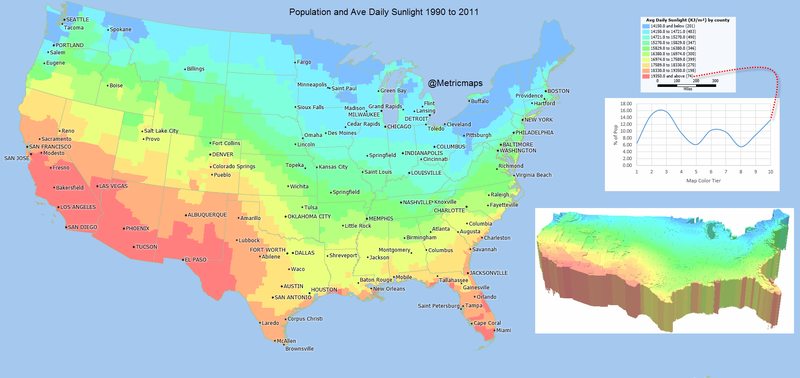“How much will it cost to power my XX,XXX square foot house?”
“How many solar panels do I need to eliminate my electric bill?”
These are the type of questions people will ask when they are contemplating installing a Solar system. Of course there are many things to consider when designing a system for your own home. Once you have looked over your wattage use from information provided in a previous post you can begin to think about your solar panels. First of all, where do you live? Your ability to use the sun for power will depend on high much sun you get annually. You can look at a chart which describes the amount of sunlight that you will get depending on the area of the country or world that you live. Here is a chart for the United States.

Another thing you will need to consider is the angle of the sun where you live and how your roof is configured. Most solar panels are mounted on the roof although you don't have to put them there. It's more expensive to mount the panels on a separate frame but this facilitates the ability to adjust the panels according to the sun's path, providing power for a longer period of time.
So as the planning continues for a home solar array you will start with these ideas first.
1. Calculate your home wattage use
2. Learn about the sunlight hours in your local area and how the sun tracks through the sky
3. See how your home or yard area can be used to capture sunlight for maximum power input
Once you have considered these questions it will be time to start figuring the type and amount of panels you will need to provide additional power for your home.
